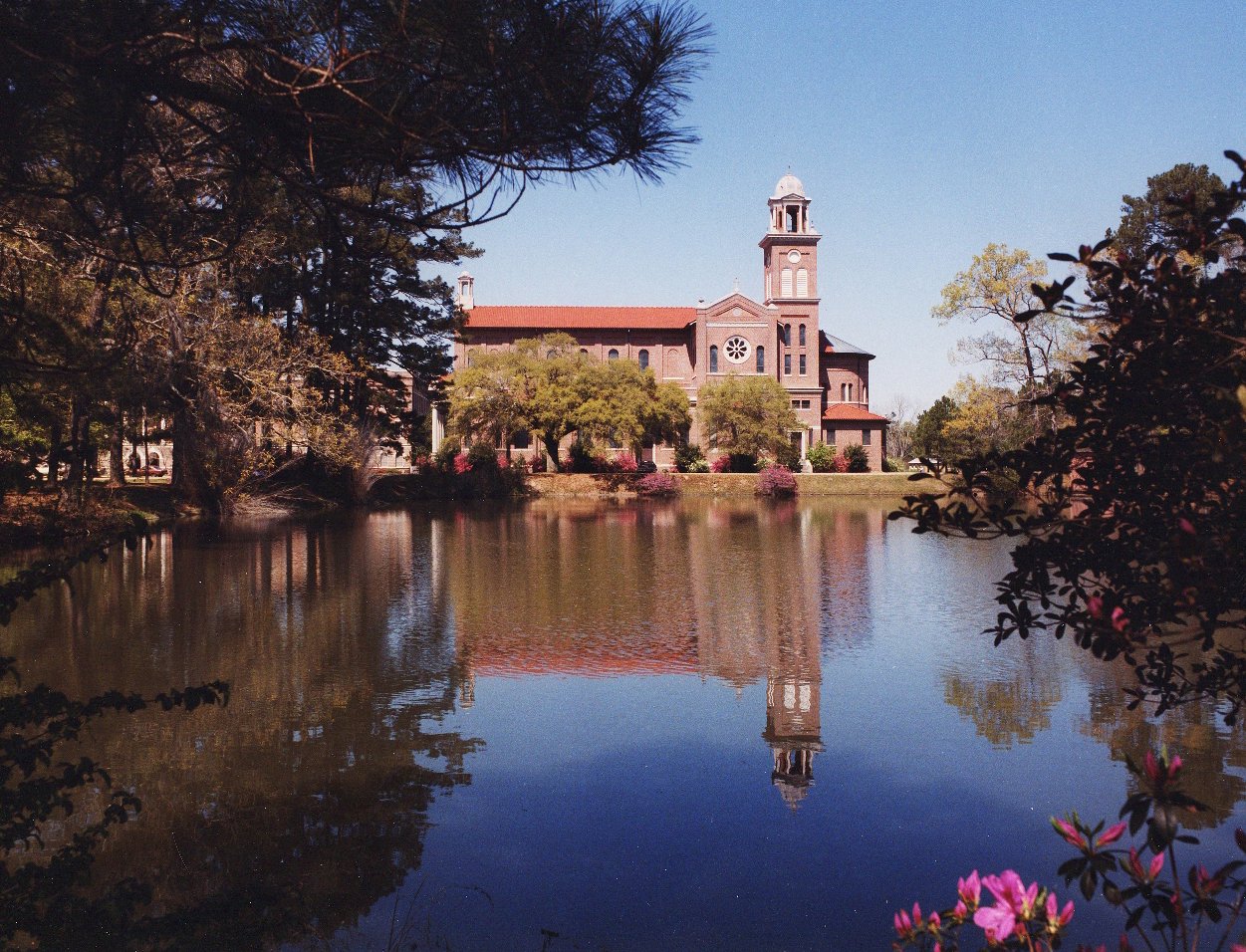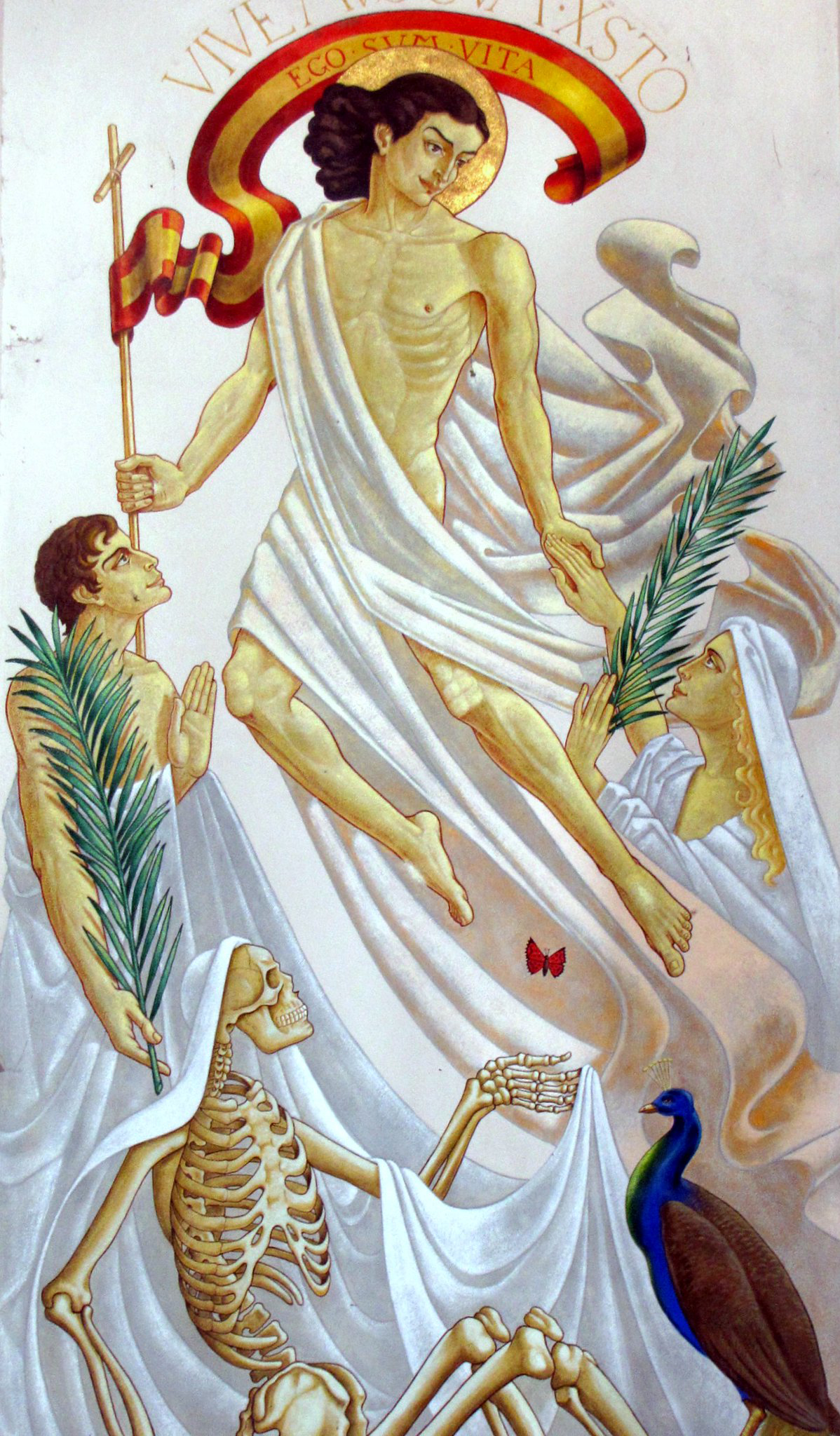
Tours

Tour Saint Joseph Abbey
The Saint Joseph Abbey Church and Monks' Refectory are both listed on the National Register of Historic Places, and both are popular destinations for the tour groups that visit the Saint Joseph Abbey campus each year. While the monks of Saint Joseph Abbey welcome your group to campus, due to their daily prayer schedule and to prevent calendar conflicts, all tours must be scheduled in advance.
If you are interested in taking a tour, please click the button below and complete the tour request form. If you have any questions about a tour, contact Welcome Center Coordinator Nikki Smith at 985-892-1800 or email her at welcomecenter@sjasc.edu.
The Monks’ Refectory, like the Abbey Church, features the murals of Benedictine artist Dom Gregory de Wit.
DeWit Murals a Highlight of Abbey Tour
Below is just a sampling of the incredible murals in the Abbey Church and Monks’ Refectory!

Planning to Tour the Abbey?
Here’s What You Will See
Groups that book a tour of Saint Joseph Abbey are able to view the beauty of the Abbey Church and Monks’ Refectory while learning the history from one of our monks or volunteer guides. Both the church and the refectory (the dining hall) are filled with the original murals of Benedictine artist Dom Gregory de Wit. The paintings, commissioned in 1946 by Abbot Columban Thuis, run from floor to ceiling in the monastic refectory and the Abbey church and are full of spiritual as well as artistic merit and considered by many to be the artist's magnum opus.
ABOUT DE WIT’S WORK AT SAINT JOSEPH ABBEY
For his first mural at Saint Joseph Abbey, Gregory was given the west wall of the monastic refectory and was asked to portray a traditional subject for such a room, the "Last Supper." On Christmas Eve of 1946, after nine months of work, the mural was blessed. Soon after, the monastic community granted Gregory permission to paint the entire refectory, and just a few years later, the Abbey church. All of the work in the refectory and church was designed by Gregory. He completed the whole of the refectory by himself in about four years. For the five-year venture in the church, Gregory employed an assistant from Switzerland named Milo Piuz.
A key point to understanding de Wit's work in both the refectory and the church is the inclusio. In other words, the artist brackets or frames his compositions with reference points. What lies between the "bookends" is the rest of the story. De Wit uses this technique with individual paintings as well as entire rooms. The viewer must, therefore, always be conscious of how the content of each painting relates within itself as well as to the other paintings in the room. A de Wit room is essentially one single composition. Another general point of interest is that the paintings are murals, not frescos. That is, they were painted on dry walls, not wet plaster.
And don’t leave campus without visiting the Saint Joseph Abbey Gift Shop. Hours of operation are Monday through Saturday, 9 a.m. to 11 a.m. and noon to 3 p.m., and Sunday, noon to 1:30 p.m.
THE MONKS’ REFECTORY
The refectory is dominated by two murals: the Last Supper and the Good Shepherd. Covering 732 square feet, the Last Supper is believed to be the largest rendering of the event in the world. The Last Supper is portrayed not as a singular event disconnected from anything before or after it, but as the focal point to that which the prophets foretold and to which all since refer back. King David and Saint Paul, neither of whom were present for the meal, frame the mural to illustrate this point. De Wit places the meal within the even larger context by depicting what lies beyond the earthly reality. Rising high above the table is Christ the King reigning from the throne of the cross.
The counterpart to the Last Supper is an image of the oldest known representation of Christ, the Good Shepherd, located on the opposite end of the room. The appropriateness of this image to balance the Last Supper is somewhat elusive. The penultimate verse of Psalm 23 reveals the hidden meaning. The psalm begins. "The Lord is my Shepherd, there is nothing I shall want." The psalmist then concludes, "You prepare a table before me ... my cup overflows." The text below the mural adds further dimension to the meaning. "The Good Shepherd is risen, who laid down his life for his sheep and died for his flock. He is eternal youth, alleluia!"
(Learn more about the Refectory murals in the booklet below.)
THE ABBEY CHURCH
The Abbey church is a fine example of classic Western Christian architecture. There are three principal areas of the traditional church: nave, dome (choir or crossing), and apse. The three-tiered longitudinal floor plan naturally lifts the eyes to make the ascent from the nave through the choir and on to the heights of the apse. De Wit's paintings both reinforce the architectural movement and build a sound liturgical theology.
A key Scriptural impetus for de Wit's work in the church comes from Psalm 113:3. "From the rising of the sun to its setting the name of the LORD is to be praised." The liturgical space where the monks gather to mark the hours of the day with prayer occurs, therefore, between images of the rising and the setting of the sun. The apse, the eastern end of the building, presents the rising of the sun. Over the doors of the narthex at the western end is the setting. What lies between is the activity of the day, the church at prayer.
(Read a complete description of the murals in the Abbey Church in the booklet below.)












